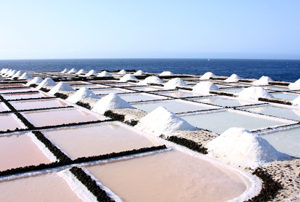First we’ll cover how water, electrolytes, proteins work in the body to understand how sodium (being a electrolyte) is so important with our health. Then we will cover how to use sodium therapeutically in our diet with knowing how it impacts how your future health and how it prevents with even help you in managing certain diseases or illnesses you already have.
Let us first understand the basics of the human body: a large percentage of body weight is composed of water that is containing dissolved particles of organic and inorganic substances vital to life. A young adult male is about 60% water whereas a female is 50%. Than the percentage of the body weight, that is WATER, declines with age. Since fat contains little water, the more obese a person gets the smaller the percentage of water weight is in that person. Salt is what we call sodium (NA) + chloride (Cl)=Sodium chloride =NaCl, which are both an electrolytes. Water is distributed throughout the body, but in compartments that are inside our cells, outside of our cells (being plasma), and in our tissues. In these compartments with the water are electrolytes but in varying amounts. The largest percentage of water in our body is inside the cells. The body fluid in us is constantly being lost and replaced for normal body processes to occur. If we eat daily food and fluids the body easily maintains the compartments in balancing the water and electrolytes in our body (remember the compartments are in the cells, outside of cells, and in the tissues). We know the body receives water to these different compartments through our diet in what we eat (foods & liquids) and through the metabolism (break down) of the those foods & liquids=nutrition that we eat and through the body tissues. There are ending products from the metabolism (break down) of tissues in our body and our foods and fluids through digestion causing our body to have an ending result of toxins in the body but are body gets rid of them if functioning within normal limits. Two vital processes that do this which demand continual expenditure of water in removal of toxins is: 1.) removal of body heat by vaporization of water via the lungs and the skin(perspiration). 2.)excretion of urea and other metabolic wastes by the kidneys dumping them in our urinary bladder; the stool also in our GI tract plays a role in this removal of metabolic wastes in evacuation. Solid foods such as meats and vegetables contain 60 to 90% water . Note the normal daily replacement of water roughly equals the normal daily loss with an entire body functioning properly. The volume of water used in these processes varies greatly with external influences such as temperature and humidity.
All body fluids contain chemical compounds. Chemical compounds in solution may be classified as electrolytes or nonelectrolytes based on their ability to conduct an electric current in the solution. Electrolytes are either positive, which is a charged particle called an cation (electric current=Na+); or negative which is not a charged particle called an anion (no electric current=Cl-). This is why you’ll see an electrolyte banner or board up in the front of chemistry class or just in your chemistry book (a positive or negative sign after every abbreviation of each element). It’s letting you know if it is + or -. Proteins are special types of charged molecules. They both have a charge that is dependent on the pH of the body fluids. A normal pH in our plasma is 7.35 to 7.45 and at this level your proteins exist with a net negative charge. In our bodies compartments, when imbalances happen regarding fluids, electrolytes or proteins problems occur; acidity and alkalinity distribution in the body becomes effected.
What does this all mean?
There are 3 main mechanisms for fluid and electrolyte movement in the body to help in maintenance of acid and base balances throughout the human body which are diffusion, osmosis, and filtration. Through these mechanisms transfer of water and electrolytes take place dispensing them in the body where they are needed.
Electrolytes account for most of the osmotic pressure of the body fluids (this pressure is the concentration of solids in a compartment—example inside your cells is a compartment). Electrolytes are VITALLY important in the maintenance of acid and base (alkaline) balancing in all cells to all the plasma (outside the cell) to every tissue region of the body. These 3 mechanisms of delivery that balance the fluids and electrolytes in our body you need to have working correctly; but when the body ends up getting imbalances of electrolytes or fluids over a long period of time certain illnesses or diseases can arise. If a system fails in our body, this can put the electrolyte and fluid balance off causing health problems in our body; take for example. kidneys that play a major role in removing toxins from our bloodstream by pulling them out of the blood vessels that filter through the kidneys and allows the organ to dump the toxins into our urinary bladder where we excrete them. When we void, the more yellow the urine means the higher the amount or concentration of toxins is in the urine and that was dumped in the urinary bladder by proper kidney function. So if disease like renal (kidneys )failure occurs than this messes up the entire process of balancing the acid and base fluids in the body by allowing the toxics to stay in our body which causes them to be dumped elsewhere, like in our tissues=the body is trying to compensate. This will cause yellowing to the sclera, skin, etc… which we call jaundice and if not repaired you will die sooner in life.
